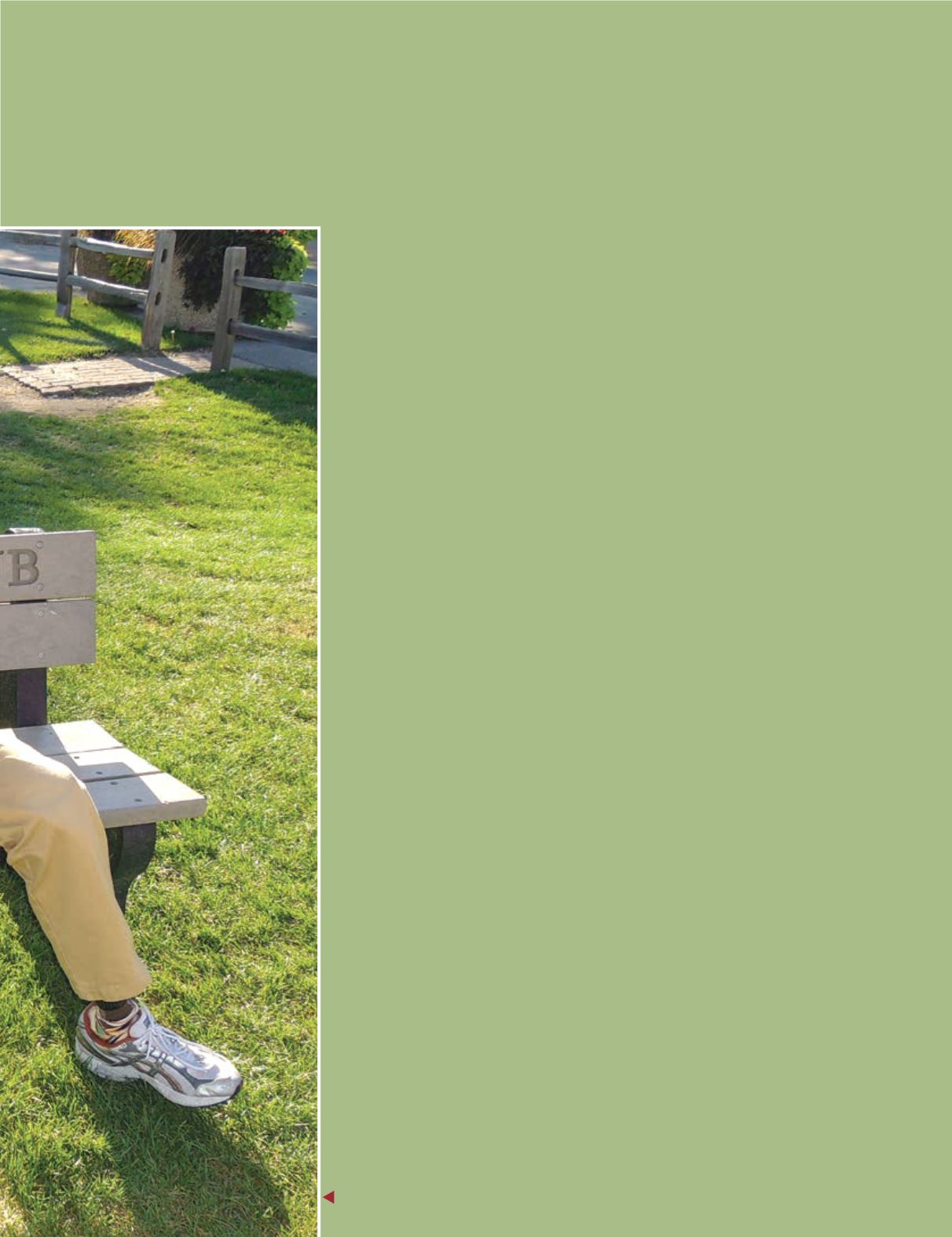
11
Bruce “Boomer” Miller was learning to
walk again, working out on a treadmill,
when he noticed a fellow amputee
entering the room from a hallway at the
Rehabilitation Institute of Chicago.
“I asked about the crazy guy with no
legs who had a smile on his face,” said
Miller, who lost a leg to vascular disease
on November 12, 2012.
Miller was told that the gentleman was
simply known as “EQ” and that he loved
golf, a passion Miller shared. The two
men soon discovered a common goal –
to return to the golf course, somehow.
It turns out that Edmund “EQ” Sylves-
ter ’57 had a grander plan than learning
to adjust his personal golf game to his
life after an infection caused by a kid-
ney stone resulted in sepsis and, con-
sequently, two weeks in a coma at New
York’s Roosevelt Hospital. When he emerged
from sedation, Sylvester learned that,
to save his life, doctors had been forced
to amputate both of his legs and his left
hand. It took two more months in the hos-
pital and five months of intensive rehab
near his Chicago home for Sylvester to
regain his strength.
One of his first orders of business was
to return to the golf course, where he’d
played 18 of the top 20 courses in the
U.S. and boasted a 6 handicap before his
illness. He currently serves as a director
of the Western Golf Association. Sylves-
ter’s own struggle to hit a golf ball with
his new limbs prompted him to conduct
research on adaptive golf. He discovered
that, according to numbers from the PGA,
18 million of America’s 57 million disabled
aspire to play golf. Upon absorbing those
figures and discovering that most golf
facilities do not possess the means to
help those with special needs learn to
play golf, Sylvester says he knew he had
found a new mission in life.
“I just couldn’t see myself sitting at
home,” he says. “I saw an opportunity
to put together a foundation that would
help others. It was a great challenge to
see if I could do it, and to help bring the
joy of being on a golf course to others.”
The Freedom Golf Association (FGA)
was born in 2012 out of Sylvester’s desire
to use the game to create community,
confidence, and a sense of joy to others.
“When the disabled hit a golf ball for
the first time,” he says, “you just cannot
believe the smiles on their faces.”
Since its inception, the FGA has pro-
vided nearly 1,200 hours of adaptive golf
instruction to roughly 700 participants.
FGA-sponsored adaptive golf workshops
have trained nearly 30 adaptive golf
coaches. A recent clinic at the BMW Tour
Championship drew 110 participants,
from the disabled to fully able-bodied;
though it is geared toward people with
disabilities, the FGA does not discriminate.
Sylvester has also expanded the FGA’s
reach by partnering with organizations
boasting similar missions, including the
First Tee, Special Olympics, Easter Seals,
and the Wounded Warrior Project.
Phil Bell enlisted in the U.S. Army out
of high school and was deployed to Iraq
in 2005. In March of 2006, the vehicle in
which he was riding was hit by an impro-
vised explosive device. Bell survived but
sustained multiple injuries, including
muscle damage, spine fractures, and
shrapnel lodged in his back. He also
suffers from memory loss related to
traumatic brain injury and from post-
traumatic stress disorder.
“When I knew I was going to be medi-
cally discharged from the Army, I felt
Triple-amputee EQ Sylvester ’57 finds joy for himself –
and for others – on the golf course
by Jana F. Brown
in the Game
EQ Sylvester’57 (r.) with Bruce “Boomer” Miller.
(photos courtesy Freedom Golf Association)


